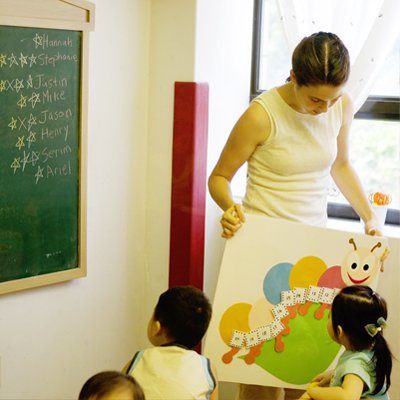By determining how your child learns best, you can create a learning environment that better meets his needs.
It's no secret that children learn in a variety of ways. While life doesn't always accommodate your child's particular learning style, you can help him by educating yourself. By identifying where your child excels and incorporating appropriate activities into his study time, you can help him achieve academic success early on.
Learning styles can be broken down in a number of ways, so it's possible that you'll come across references to styles that you may be unfamiliar with, but we'll be discussing the seven most common ones.
It's also important to note that students often cross over into multiple learning style categories. Your child may be an aural, social learner or a logical, solitary learner. Identifying which categories your student falls into will help you form an academic plan that best suits her needs.
Decoding Your Child
The most crucial part of determining your child's style is to observe him, preferably in a setting where you can view measurable results. If it's clear that your child is struggling and you can identify the way he is being taught, you'll be able to begin narrowing down potential learning styles.
You can also have your child take a test that will help identify her learning style. These can be found in educational books or online and can help provide initial direction. While these assessments may not always be 100 percent accurate, they can provide a useful starting off point.
Finally, familiarize yourself with the tendencies of each learning style. Knowing what traits are often demonstrated by students who fall under one or multiple categories will equip you to help your child.

The 7 Learning Styles
1. Visual
The visual style is a very common form of learning in which students associate images with information. This can include pictures, graphs, and diagrams. They're prone to reading (as opposed to listening) and may struggle with instructions they hear. They've got a distinct preference for pictures over sound and like to establish a project's purpose and goal before beginning.
To help your child: Provide visuals, which can include supplementing class material, helping to color code organizational tools, or helping him solve his own work in a way that makes sense.
2. Auditory
Auditory learners retain information by listening and sometimes repeating it. This style works well with traditional classroom setups. Students tend to enjoy activities, such as reading out loud, explaining things to others, and speaking up in class. These children often like grammar and other language challenges, but they may read slowly. They respond well to spoken directions and are often social learners.
To help your child: You can make her environment more multimedia-oriented by incorporating radio programs, videos, and recorded lectures. Also try listening while your child reports information back to you, organizing group discussions, or encouraging performance.
3. Verbal
Children who love and excel at reading and writing may be partial to the verbal learning style, which involves both the written and spoken word. They also tend to enjoy pictures, like visual learners. They're probably reading a lot, both for school and for pleasure, and prefer transcripts to recordings, although videos may work best. They often like working on handouts, writing on the board, and making lists. Most of all, they enjoy repetition and talking about the things they're learning.
To help your child: Try reading instructions aloud and then discussing them, perhaps more than once. You can make up rhymes or songs to help your child remember, find ways to connect words to each other and create mnemonics.
4. Physical
The physical or kinesthetic style depends on the body and sense of touch for optimal learning. These students typically enjoy taking things apart, using hand gestures, and moving around during lectures. They want to be as hands-on as possible, which means they like an active learning environment, enjoy tools, and may want to write things down repeatedly. They may fidget often, enjoy puzzles, and require a number of study breaks.
To help your child: You can provide directions when she can't remember them by explaining them in a way that is more palatable. You can also allow her to get up during study sessions, pace around as necessary, and fidget as needed. Try to supplement classroom learning with family field trips and hands-on activities.
5. Logical
Logical or mathematical learners are great with numbers and recognizing patterns, and they connect what many others struggle with. They love statistics and when concepts are concretely proved. They're very concerned with the actual process of working and are very systematic. They thrive on order and will often create manuals/instructions for other students.
To help your child: Try to provide the "why" for assignments because he performs better when he understands the purpose. Help him make lists of key points to create a process, and then divide things into systems.
6. Social
Most students are either social or solitary in addition to one of the above learning styles. As you might imagine, social/interpersonal learners are great communicators, both in speaking and writing. Large classes and small groups are good setups for this style.
To help your child: Set up peer study groups for them and consider creating a social study time as a family.
7. Solitary
For solitary or intrapersonal learners, solo study time is key. These students are introspective and easily maintain focus when left to their own devices.
To help your child: Set aside quiet time for studying at home. Focus on creating a nurturing environment that is free from distraction.
No matter your child's learning style, remember to be flexible. You're already on the right track by understanding how your child learns. You can do your best to enhance your student's academic experience, but remember he or she will make accommodations when necessary.
Retrieved From: https://goo.gl/7B4ekV

















